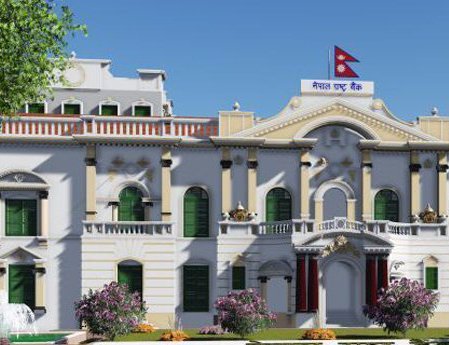
Monetary policy and central banking
Central banks play a key role in ensuring economic and financial stability. They love monetary policy to get low inflation. Despite the global financial crisis, central banks are expanding their tools to address financial institutional risks and manage risk exchange rates. In the wake of the Covidpandemic, monetary policy has become unconventional in order to facilitate central bank monetary policy, simplify access to liquidity in major financial markets, and maintain internal and non-traditional instruments to maintain credit flows.
Monetary policy
The role of central banks is to help manage monetary policy and economic fluctuations to achieve key price stability (low and stable inflation). Frameworks for central banks have been subject to major changes in recent decades.
For example, banks take money from commercial banks to reduce the amount of money collected by the banks. The objective of this open market operation is to mention interest rates over a period of time, affecting long-term rates and overall economic activity. Many countries, especially the lesser-organized countries, do not have effective monetary transmission mechanisms.
Earlier in the fundamental inflation movement, a form could be developed for the country to talk to the central bank head on interest rate for the period.
Foreign exchange management and policies
The choice of monetary structure is closely linked to exchange rate management. There is no doubt that in a country where the fixed exchange rate is more flexible than in a country with a more flexible exchange rate. This is relevant in the exchange of currency with Pakistan and India. Some countries try to fix the exchange rate, still trying to manage it at this level, which may involve a tradeoff aimed at price stability.
In the wake of the Covid 19 pandemic, the central bank has been tasked with easing global monetary policy, providing adequate liquidity to the core fund market, and proportional credit flows. And to ease tensions in the local market, many emerging market central banks, for the first time, use asset acquisition programs, various attempts at foreign exchange currencies.
Foreign exchange states and policies
The choice of foreign exchange rate is closely linked to the government. Fixed exchange rate more flexible than country exchange rate will be an opportunity for independent monetary policy compared to country. Some try to fix the exchange rate, try to keep it level, which can be linked to the objective of keeping the price stable.
A fully flexible exchange rate system supports an effective inflation symbol outline.
Monetary policy is the process by which the monetary authority of a government, central bank, or a country controls (i) the supply of money, (ii) the availability of money, and (iii) the rate of money or interest, achieving a set of objectives focused on economic growth and stability. To do Monetary theory provides insights into how to formulate and implement maximum monetary policy.
Monetary policy is generally referred to as either expansion policy, or a contraction, where an expansion policy increases the total money supply in the economy, and a contraction policy reduces the total money supply. The expanded policy has been passed by lowering interest rates for unemployment and recession, while the contractionary policy is working to raise interest rates to fight inflation. Monetary policy should conflict with fiscal policy, which refers to government debt, spending and taxes.
In the mid-term review of the monetary policy of 2078/79, Nepal Rastra Bank (NRB) has reduced the demand based non-performing loans to the productive sector. A recent monetary policy review by the NRB aimed at balancing the macroeconomic situation and controlling imports has sought to control debt by increasing the risk burden.
Nepal Rastra Bank (NRB) has said that it will review the real estate loans, securities loans, real estate loans, personal hire purchase loans and loans of margin nature.
For the first time, the NRB seems to be signaling an interest rate policy towards the productive sector. The fact that the interest rate on loans to the productive sector will be differentiated from the interest rate on loans to other sectors means that the interest rates on loans to the productive and non-productive sectors are now expected to be different.
At the same time, the monetary policy review has indicated that the refinancing facility will be phased out, focusing on the worst-affected areas. The increase in the refinancing rate from 5 percent to 7 percent indicates that such a facility will be extended only to the most affected areas.
In addition, the Monetary Policy Review has tightened import credit, including trust receipts (TRs), and personal overdraft loans issued by banks and financial institutions.
The review raised the standing liquidity facility to 7 percent, the policy repo to 5.5 percent and the deposit mobilization rate to 4 percent.
Keeping the CRR unchanged at 3 percent, the statutory liquidity ratio has also been kept unchanged.
Similarly, NRB estimates that hundi is the main reason for the decline in remittances sent by Nepalis who have gone for foreign employment along with the increase in imports. Due to which the internal remittance payment limit has been reviewed. Therefore, the NRB has also indicated that the remittance will be deducted up to a maximum of some amount.
The limits on remittances made by remittance companies through their agents and sub-agents will be reviewed, the review said.
In view of the impact of COVID-19, it has been stated that the provision of credit to commercial banks will be reviewed on the basis of their expertise in the areas of agriculture, energy and small, home, small and medium enterprises. It has also been said that the limit of remittances made by remittance companies through their agents and sub-agents will be reviewed.
Banks and financial institutions have increased the interest rate on loans from Nepal Rastra Bank by 2 percentage points to 7 percent. The Nepal Rastra Bank (NRB) has made such an arrangement while conducting the mid-year review of the monetary policy on Thursday. Earlier, the bank rate was 5 percent
The monetary policy review has been conducted with the objective of controlling the growing balance of payments deficit. Bank rates have risen to support the same goal. The interest rate charged by banks on refinancing will also be increased by 2 percentage points to 7 percent. Until now, banks used to charge up to 5 percent interest to the customers by bringing back refinancing from NRB at 3 percent interest.
Monetary policy has now made it possible for banks to charge interest of up to 7 percent on such loans. Interest rates have been raised to control the recent rise in credit flows.
Experts say that the corona-related facility has been cut in view of the fact that only certain groups have benefited from the corona pandemic. Similarly, monetary management has reflected towards maintaining macroeconomic stability including external sector stability in view of the existing pressure on external sector and liquidity.
In order to strengthen the internal and external sector balance, emphasis will be laid on the flow of financial resources in the areas of productivity growth, job creation and entrepreneurship development, the monetary policy review report said.
Banks have also introduced a policy to review the risk burden of loans including trust receipts, import loans, personal overdraft loans, real estate loans related to land plotting, personal hire purchase loans and loans of margin nature.
In view of the impact of the Corona pandemic, the credit limits to be extended by commercial banks to agriculture, energy and small, home-based, small and medium enterprises in the areas specified on the basis of their expertise will also be reviewed.
The monetary policy has also introduced a policy to review the existing system of importing goods from India on credit facility. NRB says that it will also review the existing system of opening accounts in convertible foreign currency in the name of non-resident Nepalis.
The review report also states that the limit of remittances made by remittance companies through their agents and sub-agents will also be reviewed.
The main priority of the Government of Nepal for this Fiscal Year is economic recovery through various relief measures, agricultural modernization and job creation for the epidemic affected areas.
Monetary policy for the revival of aviation, transport, hotel, restaurant and other tourism enterprises severely affected by the epidemic of Covid 19 will be reviewed to prioritize the flow of working capital, concessional loans and refinancing. Due to lack of capital to complete the construction of projects related to the tourism sector, provision was made for easy provision of loans from banks and financial institutions for such projects.
After analyzing the financial condition of such debtors, it was decided to keep the interest maturing separately till mid-July 2079 as per the need and no additional penalty and penalty interest would be charged on such amount. After the tourism industry, the most affected sector is public transport.
For the region, too, monetary policy has provided some relief. This is because the provision of loan for maintenance of public transport can be expected to bring some relief to the affected areas. At the same time, the stimulus given by the monetary policy to strengthen the capital base of banks and financial institutions seems to facilitate the merger of banks and financial institutions.
Monetary policy is commonly referred to as either expansionary policy, or contractionary, where an expansionary policy increases the total money supply to the economy, and a contractionary policy reduces the total money supply. Expansion policy is traditionally used to deal with unemployment and recession by lowering interest rates, while contractionary policy must raise interest rates to fight inflation.
Although Covid 19 poses an unprecedented challenge to sustainable growth, key performance indicators in Nepal's financial sector are unsatisfactory.
In order to increase the access of small investors by minimizing the credit risk of margin nature of share securities flowing from banks and financial institutions, such loans can be borrowed by an individual or institution from a financial institution up to a maximum of Rs 40 million and from the overall financial system up to a maximum of Rs 120 million. The bi-annual review did not address this issue, which is likely to be affected.
- Susan's “U-Turn” From Atheism To Spirituality And Superstition: Some Considerations
- Jun 29, 2025
- Former Ambassador To People’s Republic Of China Acharya's 'Diplomatic Diary': A Collection Of "Autobiography " Including Diplomacy
- Jun 17, 2025
- Banker And Businessman Being The Same Person: How Practical, How Impractical
- Jun 01, 2025
- 2082/83 Policy And Program: Presentation New, Short But Not Exciting
- May 07, 2025
- Nepal's Capital Market: Some Analysis
- May 02, 2025













